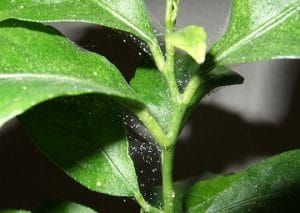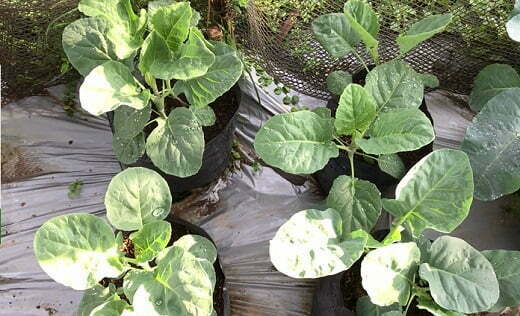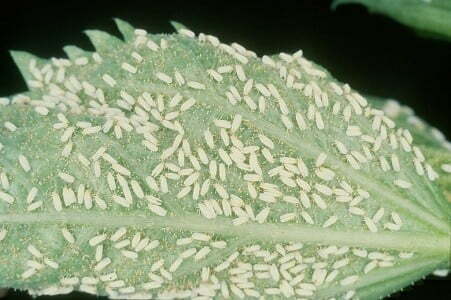Methods For Treating Spider Mite Infestation
One of the most common plants pests is spider mites. The symptoms of spider mite infestation include discoloration, flecking, and scorching of leaves. They injure plants as they feed, bruising plant cells using their little and whip-like mouthparts. A sternly damaged plant may result in leaf loss and plant death. Spider mites have natural predators such as small lady beetles, minute pirate bugs, predatory mites, predatory thrips, and big-eyed bugs. But, some insecticides kill these natural predators, allowing spider mites to proliferate. Correct irrigation and moisture management are among the vital methods to eliminate these harmful pests.
Spider mites are members of the arachnid family which includes spiders, scorpions, ticks, and daddy-long-legs. They are little which makes them difficult to see through the naked eye. They vary in color depending on their species and seasonal changes.
Their webbing is often found on severely infested plants. Their webbing serves as their natural protection from their predators and different environmental conditions. The webbing created by spiders and the fluff of cottonwoods is typically confused with spider mite webbing.
The most popular spider mite species is the two-spotted spider mite. destroys a wide range of plants, including vegetables, plants, and flowers.
Correct watering of plants especially throughout the dry season can stop spider mite outbreaks. Regular hosing of plants using powerful jet water is needed to control a spider mite infestation. This also gets rid of the dust that accumulates on foliage and gets in the way of mite predators. Dislocating mite webbing may also put off mites from laying eggs until a new webbing is made. There are also instances when changing the location of plants that are very susceptible to mites may also lessen the likelihood of infestation.
Another way to stop a mite infestation is through the use of insecticides such as miticides or acaricides. Not all insecticides are proven to kill mites. In fact, applying the wrong chemicals may only intensify the infestation. Typically, miticides cannot kill mite eggs. Therefore, until the infestation is resolved, you need to repeat the application every two weeks. You can buy the right kind of insecticide at your local garden centers. While you’re there you can also buy hydroponic gardening supplies.
Stopping the spread of spider mites on houseplants is not easy. If you are trying to cure mite-infested house plants, you need to treat them all at the same time. Trim and get rid of the heavily infested leaves. Extremely infested plants must be thrown away to prevent other plants from being infested as well. Regularly hose smaller plants in the sink or in the shower. With a soft and damp cloth, wipe the leaves of bigger plants. If the infestation persists, do the process after a week or two.
How to get rid of spider mites
So, what to do about them? First thing if you are gardening indoors or in a greenhouse keep it clean and keep your equipment that you use regularly disinfected. Keep the floor swept, get rid of old soil, if using containers wash them out, and disinfect them.
Second, keep the temperature as low as possible. Spider mites thrive in higher temperatures so try and lower the temps as much as you can to help slow these annoying little garden pests down a bit. Keep your plants as healthy as you can, prune lower undergrowth on your plants.
This will give the spider mites fewer places to hideout. They will attack unhealthy, sickly plants first and work their way to your others from there. This is probably the best advice I can give you, BE CONSISTENT this applies to all aspects of your gardening.
Be consistent with your cleaning, watering, pruning, and your spraying. Once you have had an infestation of spider mites it is almost impossible to kill spider mites off completely.
My advice would be to spray your plants once every other week, when you do this it is a good idea to spray one day and then spray again in 3-4 days.
Doing this will help to keep the spider mites from becoming widespread in your garden. Another thing to consider is to switch between a few different things to spray your plants with.
If you use the same spray over and over the mites will become immune to it. Make sure if your plants are flowering that you are using something approved for that purpose. Try to stay away from the harsh poisons. They really are not necessary if you just stay consistent. Here are some of my personal favorite products to help fight spider mites.
Option for treating spider mite
Anyone who’s ever had experience with spider mites knows that failing to control them could mean disaster for houseplants and gardens. Because these insects breed so prolifically it’s important to get a handle on an infestation in its early stages before populations explode. There are several ways to do this including natural methods, organic miticide, and chemical pesticides. Which method is right for you depends upon the seriousness of your infestation and your personal comfort level with chemicals.
Natural Methods
The first spider mite treatment option is to use natural methods that incorporate water and natural predators. The water portion of the treatment involves liberal watering of plant stems and leaves upon the earliest signs of infestation and then continued watering until the infestation is eliminated. Watering is important because it keeps mites off your plants. However, it does not kill the mites, which is where the second portion of the treatment comes in.
Ladybugs are one of the spider mites’ natural predators. You can purchase ladybugs from suppliers who specialize in natural pest control. By releasing ladybugs into the environment you will be able to get rid of most of your spider mites without causing any harm to children, pets, etc. If your infestation is completely indoors, and releasing ladybugs or other predators is not attractive to you, the second treatment option is probably better.
Organic Miticides
The second option is to use an organic miticide like Liquid Ladybug. This kind of product uses a formula made from the essential oils of certain plants. These oils are deadly to spider mites but are harmless to predators, as well as human beings and our pets.
When applied to plants that are infested the organic miticide kills adult mites on contact by penetrating the outer shell and disintegrating their inner parts. These essential oils are also able to seep into small cracks in spider mite eggs and kill hatchlings in the same way. By using something like Liquid Ladybug over the course of three days, you can completely eliminate most spider mite infestations.
Chemical Pesticides
Chemical pesticides are often used by farmers and those with extremely large gardens in order to control very sizable infestations. While this is certainly possible, it should be reserved only for large-scale operations. Chemical pesticides not only kill spider mites, they also kill the mite’s natural predators, which only help future colonies reproduce more successfully. Chemical pesticides also pose a potential danger to your children, your pets, and groundwater.
Once a spider might infestation has been eliminated you can best prevent future infestations with a combination of natural methods and organic miticide. If you continue to inspect leaves daily, spray them with water, and use your organic miticide according to the directions, you should be able to stave off future problems.
I hope This treating spider mite article can help you for treating spider mite.
 JOYNIM FARM Goat Farming, Cattle Farm, Laying Hens, Quail Farm, Gardening
JOYNIM FARM Goat Farming, Cattle Farm, Laying Hens, Quail Farm, Gardening




